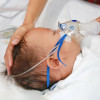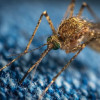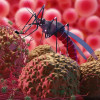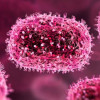
 IJCP Editorial Team
IJCP Editorial Team
Mental Health: Raising Concerns among Young Population
One in seven 10-19-year-olds experience a mental disorder, with depression, anxiety, and behavioral disorders among the leading causes of illness and disability in adolescents, and suicide as the fourth contributor to death among 15-29-year-olds.
In recent years, mental health has emerged as a
critical issue, especially among young people. The increasing prevalence of
mental health problems among the youth has sparked discussions worldwide. It's
essential to understand the significance of mental health awareness, its
causes, prevention strategies, treatment options, and the overall concept to
address these concerns effectively.
What is Mental Health?
Mental health refers to a state of emotional,
psychological, and social well-being in which individuals can cope with the
everyday stresses of life, work productively, and contribute to their
communities. It encompasses the ability to navigate challenges, build and
maintain positive relationships, and adapt to change effectively. Mental health
is not merely the absence of mental illness but rather a holistic state of
thriving and resilience.
What Causes Mental Health Problems?
The causes of mental illness are diverse and
intricate, stemming from a blend of genetic, psychological, and environmental
factors.
- Genetic predispositions can play a role, but early-life
experiences, trauma, abuse, neglect, and socio-economic circumstances may
also induce mental distress.
- Other factors, such as lifestyle choices, like substance
abuse and poor nutrition, lack of social support, and chronic stress, can
also contribute to mental health issues.
- Moreover, societal pressures, including unrealistic beauty
standards and the impact of social media, further exacerbate mental health
problems, particularly among young individuals.
Mental Health in Adolescents and Young Adults:
The adolescent phase is a crucial period marked by
significant physical, emotional, and social changes, with exposure to adverse
circumstances like poverty, abuse, or violence heightening susceptibility to
mental health challenges. In addition, academic stress, social expectations,
technological advancements, and economic uncertainties contribute to heightened
levels of stress and anxiety.
The common mental conditions prevalent among adolescents include:
- Emotional Disorders: Anxiety and depression are
the most prevalent mental disorders among older adolescents, contributing
to rapid mood changes and social withdrawal. These disorders can lead to
school-related challenges and increase the risk of suicide.
- Behavioral Disorders: More common in younger
adolescents, behavioral disorders like ADHD and conduct disorder can
disrupt education and may lead to criminal behavior, impacting
adolescents' prospects.
- Eating Disorders: Anorexia nervosa and
bulimia nervosa often emerge during adolescence, characterized by abnormal
eating behaviors and obsession with body weight. Anorexia nervosa, with
its high mortality rate, poses significant health risks, including
premature death.
- Psychosis: Symptoms of psychosis, like
hallucinations or delusions, typically surface in late adolescence or
early adulthood, impairing daily functioning and often resulting in stigma
and human rights violations.
- Risk-Taking Behaviors: Adolescents often
engage in risk-taking behaviors like substance use or sexual risk-taking,
which can stem from emotional difficulties and significantly impact mental
and physical well-being. Heavy episodic drinking, tobacco use, cannabis
consumption, and violence perpetration are common concerns among
adolescents, posing severe health risks and social consequences.
Adolescents grappling with mental health issues
often feel isolated and hesitant to seek support, exacerbating academic
difficulties, risky behavior, health concerns, and potential violations of
their rights.
How is Poor Mental Health Treated?
Treating poor mental health involves a combination
of psychotherapy, medication, and lifestyle modifications tailored to
individual needs. Psychotherapy, including cognitive-behavioral therapy (CBT),
dialectical behavior therapy (DBT), and mindfulness-based interventions, helps
individuals understand and manage their thoughts, emotions, and behaviors.
Medications such as antidepressants, anti-anxiety drugs, and mood stabilizers
may be prescribed to alleviate symptoms of mental illness. Additionally, lifestyle
modifications, including regular exercise, healthy eating habits, adequate
sleep, and stress management techniques, are crucial in managing and improving
mental health.
Mental Health Awareness: Significance and Relevance
Mental health awareness refers to understanding,
recognizing, and acknowledging mental health conditions prevalent in society.
Young people reported a lack of knowledge of mental health and the support
system, leading to a sense of insecurity and possibly a delay in seeking help.
Improved health literacy among young people may facilitate help-seeking through
mechanisms of awareness of service availability and symptom recognition.
Mental health awareness programs involve educating
individuals about various mental health disorders, their symptoms, and
available resources for support and treatment, aiming to promote understanding
and encourage early intervention. By addressing these challenges, mental health
awareness campaigns foster a supportive environment, encourage resilience, and
reduce the stigma associated with seeking help.
Tips for Preventing and Promoting Mental Health in adolescents and young adults
1. Foster Open Communication: Encourage
adolescents and young adults to express their thoughts and feelings openly and
without judgment. Create a supportive environment where they feel comfortable
discussing their concerns.
2. Encourage Healthy Coping
Strategies: Teach adolescents and young adults healthy ways to cope
with stress, such as engaging in physical activity, practicing mindfulness,
journaling, or seeking support from trusted individuals.
3. Promote Self-Care: Emphasize the
importance of self-care practices, including getting enough sleep, eating
nutritious meals, exercising regularly, and taking breaks to relax and
recharge.
4. Build Resilience: Help
adolescents and young adults develop resilience by encouraging them to learn
from challenges, develop problem-solving skills, and maintain a positive
outlook even in difficult situations.
5. Foster Social Connections: Encourage
adolescents and young adults to build and maintain supportive relationships
with friends, family members, and peers. Social connections can provide
emotional support and a buffer against stress.
6. Address Bullying and Peer
Pressure: Teach adolescents and young adults strategies for dealing
with bullying, peer pressure, and social conflict. Encourage assertiveness,
empathy, and seeking help from trusted adults when needed.
7. Monitor Screen Time: Encourage
adolescents and young adults to balance their screen time with offline
activities. Excessive screen time, especially on social media, can contribute
to feelings of inadequacy and negatively impact mental health.
8. Establish a Positive Role Model: Model healthy
behaviors and coping strategies for adolescents and young adults to emulate.
Show them that it's okay to prioritize their mental health and seek help when
needed.
Prompt addressal of mental health concerns among adolescents is essential. Protecting them from adversity, promoting socio-emotional learning, fostering psychological resilience, and ensuring access to mental health services are vital steps to safeguard their well-being throughout adolescence and adulthood.

IJCP Editorial Team
Comprising seasoned professionals and experts from the medical field, the IJCP editorial team is dedicated to delivering timely and accurate content and thriving to provide attention-grabbing information for the readers. What sets them apart are their diverse expertise, spanning academia, research, and clinical practice, and their dedication to upholding the highest standards of quality and integrity. With a wealth of experience and a commitment to excellence, the IJCP editorial team strives to provide valuable perspectives, the latest trends, and in-depth analyses across various medical domains, all in a way that keeps you interested and engaged.















Please login to comment on this article